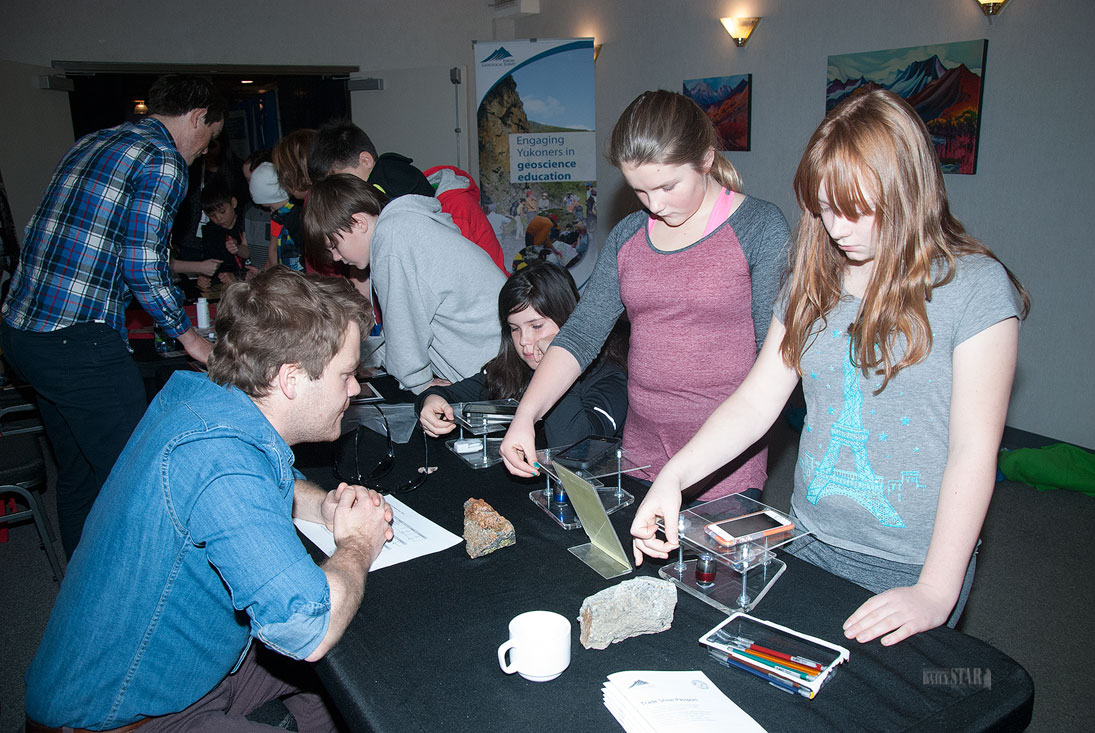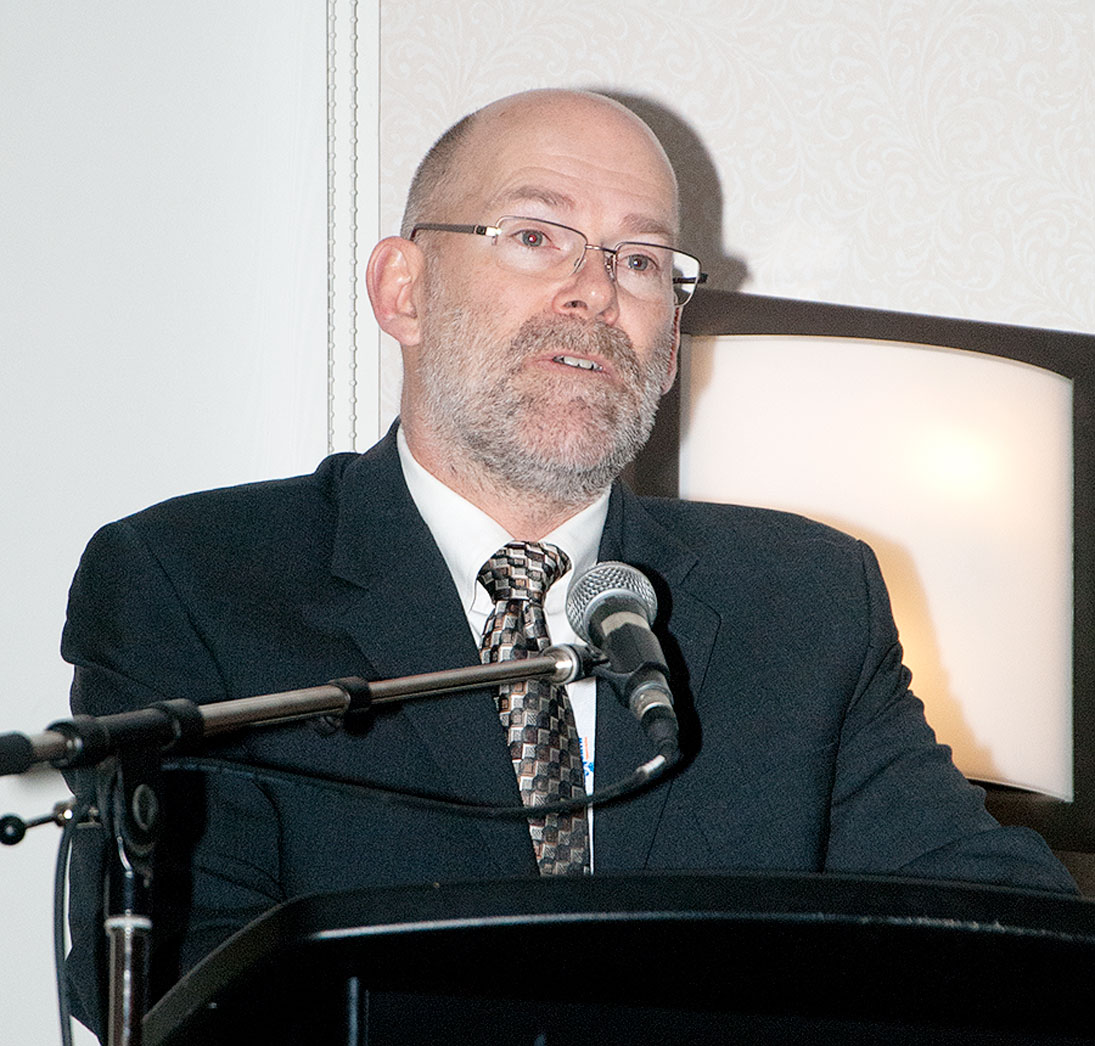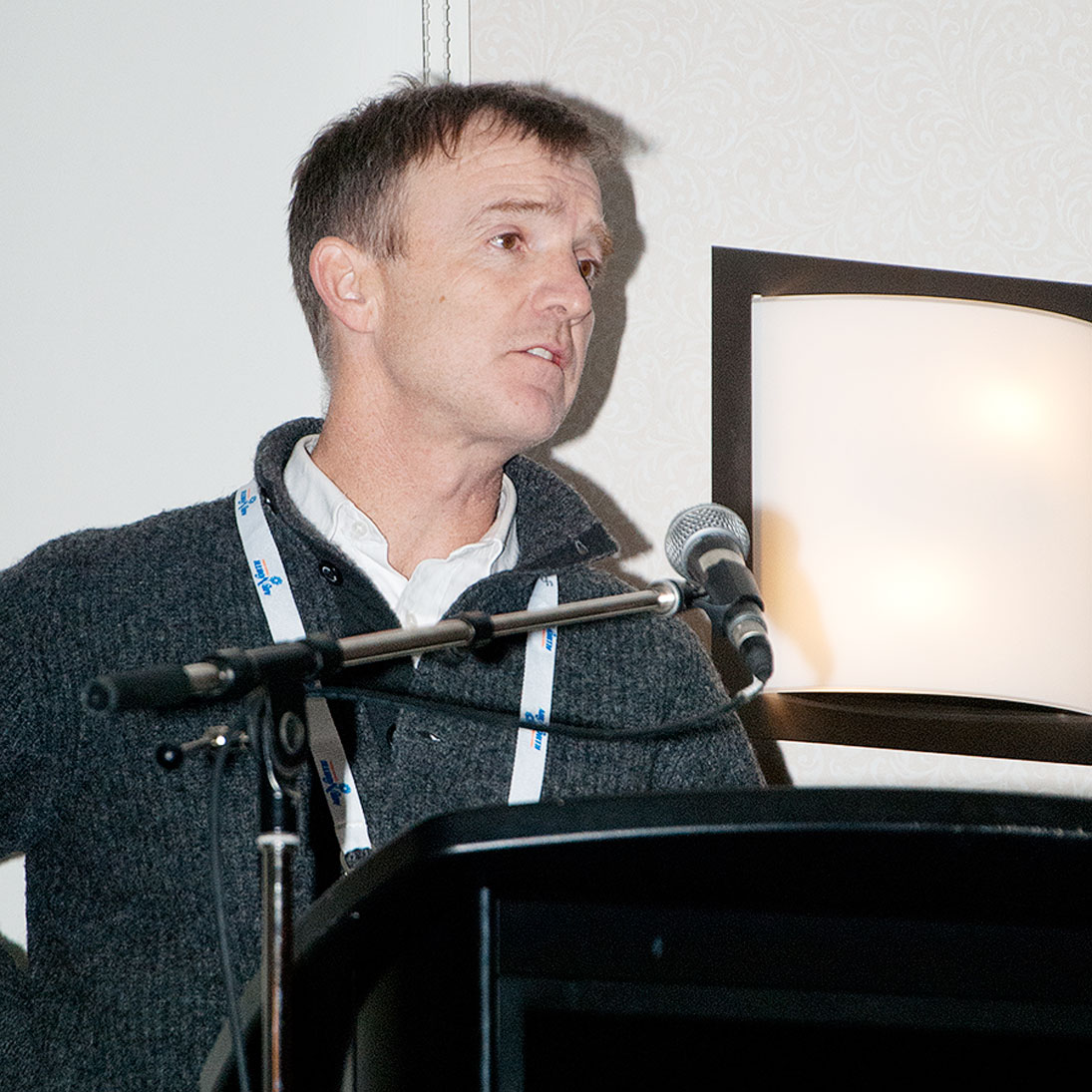
Photo by Chuck Tobin
STUDENT INTEREST – Students from the Elijah Smith Elementary School were among those taking in technical but cool gadgets on display at this year’s Yukon Geoscience Forum and Trade Show.

Photo by Chuck Tobin
STUDENT INTEREST – Students from the Elijah Smith Elementary School were among those taking in technical but cool gadgets on display at this year’s Yukon Geoscience Forum and Trade Show.

Photo by Chuck Tobin
INTEREST IN YUKON UP – Geologist Scott Casselman told the audience attending the Yukon Geoscience Forum that after Goldcorp – one of the largest gold producers in the world – announced its intention to buy the Coffee gold project, interest in the Yukon by others suddenly increased.

Photo by Chuck Tobin
PLACER NUMBERS GOOD – Geologist Jeff Bond said this morning the production from placer mines across the Yukon is up this year.
For the Yukon’s hardrock mining industry,
For the Yukon’s hardrock mining industry, the decision earlier this year by Goldcorp to buy the Coffee gold project off Kaminak Gold sparked renewed interest in the territory.
In the placer mining industry, record levels of mining and production have been encouraged by the price of gold, lower fuel costs and a Canada-U.S. exchange rate that favours the mining industry in general.
The third day of the annual Yukon Geoscience Forum opened this morning with the summaries of the hardrock and placer industries provided by geologists with the Yukon Geological Survey.
Talks over the first two days through the weekend were more general in nature, though thought-provoking and in some cases encouraging.
University professor and author Ken Coates, who was raised in Whitehorse, spoke of the importance of quickly getting on with making First Nations partners in development of Canada’s resources through meaningful resource revenue-sharing agreements.
It is Canada’s resource sector, Coates told the audience on Saturday, which represents the front line of opportunities to foster reconciliation with the country’s aboriginal people.
Buddy Crill of Goldcorp laid out how his company – one of the largest gold producers in the world – has put forward an aggressive schedule that would see construction of the Coffee gold project beginning in 2018, with production commencing at the end of 2020.
Admittedly, Crill acknowledged, it’s an aggressive schedule, but that’s the timetable the company’s board of directors has laid out.
As talks moved into more technical presentations this morning, the audience first heard a tribute paid to the late Charlie Roots.
The Whitehorse geologist with the Geological Survey of Canada, who worked arm-in-arm with the Yukon’s Geological Survey, died last June.
Yukon geologist Don Murphy described Roots as a man who knew everybody in the industry, who covered more ground than anybody with passion and enthusiasm.
“Charlie was Mr. Yukon Geology in many ways,” he said.
Geologist Scott Casselman told the audience the total amount of money spent on exploration in the hardrock industry was up to about $61 million so far this year, representing another year of decline.
Exploration expenditures peaked in 2011 at $300 million, and have been going down ever since.
Casselman pointed out, however, the annual pre-season survey of companies they do every spring initially indicated spending on exploration would be somewhere around $40 million.
Then in May came Goldcorp’s plan to buy the Coffee project.
That was followed in late June by Britain’s decision to leave the European Union. Suddenly, interest in the Yukon’s potential for untapped gold resources took off.
Companies who were planning modest if not meagre exploration projects suddenly had doors opening to more financing opportunities, Casselman explained in an interview following his presentation.
He said when you have major international companies like Goldcorp making a $520-million purchase of the Coffee project, other major players in the industry stand up and take notice.
In addition to exploration spending, the hardrock industry spent $22 million on mine development, most of which was spent at the Coffee property, Casselman told the audience.
Most recently, annual expenditures in development peaked in 2009 at just over $160 million as the Minto Mine was gearing up to full swing, the Wolverine Mine was gaining traction and Alexco’s Keno Hill project was taking hold.
Of the $83 million spent on hardrock exploration and development this year, about 67 per cent or $56 million was spent on gold projects, while 23 per cent or $19 million was spent on lead-zinc projects, Casselman told the audience. He said six per cent or $5 million was spent on silver projects.
The audience also heard over the weekend how Goldcorp estimates it will require $400 million in spending to bring the Coffee project into production in the next four years.
Figures presented by Casselman showed it was another quiet year for staking mineral claims in the hardrock industry, with 5,762 claims recorded, or slightly more than last year but a mere spit in the bucket compared to 120,000 five years ago.
On the upside was the placer mining industry, the audience heard from geologist Jeff Bond of the Yukon Geological Survey.
Bond said as of Nov. 14, 65,646 crude ounces of gold had been reported by the industry, with a total value of $90.2 million.
Both the ounces mined and the total value are up from last year, he pointed out. When the final tally comes in for the entire year, he added, he expects to see more than 70,000 ounces mined.
Bond said he believes it was the price of gold, lower fuel costs and the exchange rate that drove the additional interest and production in the industry.
As is typical, most of the placer gold came from the Indian River watershed south of Dawson City, accounting for 49 per cent of total production or 31,796 ounces, with claims along the Indian River itself producing more than a quarter of the gold.
Figures presented by Bond showed production from the Indian River watershed is up about 6,000 ounces over last year and more than double the production in 2011.
The Klondike River watershed was again second in production, accounting for 17 per cent or 11,310 ounces.
Hunker Creek led the way with about 2,400 ounces, followed by production on Bonanza Creek of just over 2,000 ounces.
Figures showed the production of 9,174 ounces in the Lower Stewart River watershed was third-highest.
Gold coming out of the Kluane region – the region with the lowest production – was down a couple of hundred ounces but still above-average over the last six years, with 1,289 ounces reported so far, according to the figures.
Gold was selling this morning for $1,212 US an ounce.
In order to encourage thoughtful and responsible discussion, website comments will not be visible until a moderator approves them. Please add comments judiciously and refrain from maligning any individual or institution. Read about our user comment and privacy policies.
Your name and email address are required before your comment is posted. Otherwise, your comment will not be posted.
Comments (1)
Up 2 Down 25
lewis rifkin on Nov 21, 2016 at 8:21 pm
Thank you yukon voters! We now have the premiers ear and our cross hairs on the entire Yukon mining industry. Masi cho